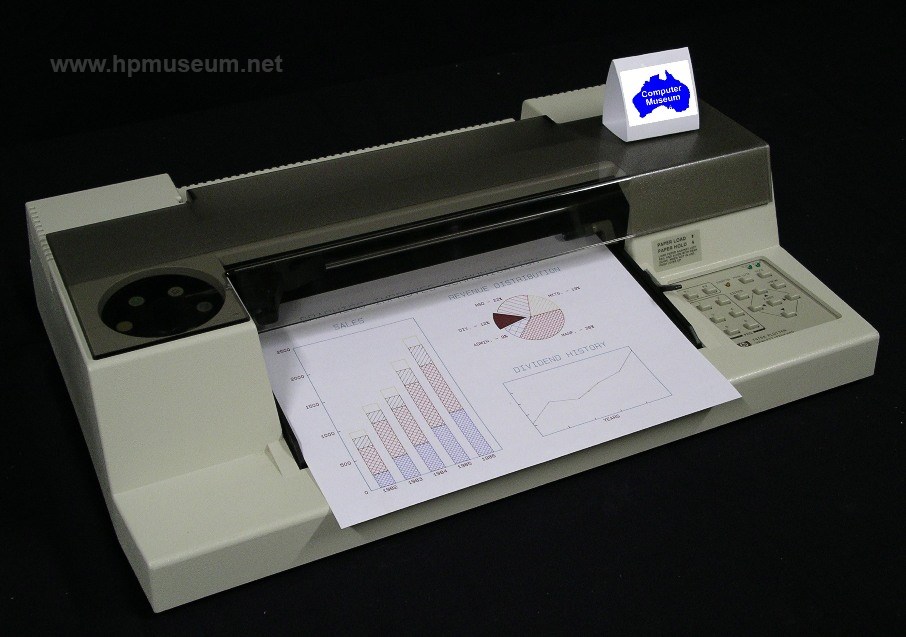Peripheral Products
 | Pen Plotters Selection: |
| 1) 9125A Flatbed Plotter (1968) | |
| 2) 7200A Flatbed Plotter (1969) | |
| 3) 7210A Flatbed Plotter (1972) | |
| 4) 9862A Flatbed Plotter (1972) | |
| 5) 7221 Flatbed Plotter (1977) | |
| 6) 9872 Flatbed Plotter (1977) | |
| 7) 7225 Flatbed Plotter (1978) | |
| 8) 7220 Flatbed Plotter (1979) | |
| 9) 7580 (1981) | |
| 10) 7470A (1982) | |
| 11) 7585 (1982) | |
| 12) 7475A (1983) | |
| 13) 7550 (1984) | |
| 14) 7090A Measurement Plotting System (1984) | |
| 15) ColorPro (1985) | |
| 16) DraftPro (1986) | |
| 17) DraftMaster (1987) | |
| 18) DraftPro DXL (1988) | |
| 19) 7600 Series Electrostatic Plotters (1988) | |
| 20) DesignJet 600 (1992) | |
| 21) HP DesignJet Plotter (1992) | |
HP made its first acquisition in 1958 when it bought the F Mosley company of Pasadena, California. Mosley made graphics recorders for instruments. This business subsequently became the San Diego Division which made HP's pen plotters. In the 1970s, pen plotters were the only way to get high-resolution hardcopy graphics output from computers. The resolution of output from graphics printers generally varied between 72 dpi and 100 dpi. But, even HP's earliest digital pen plotters could produce a line resolution equivalent to 1000 dots per inch. Until 1987, pen plotters were also the only cost-effective method of getting color output from computers. Plotters were a good, though not spectular, business for HP through the end of the 1970s. Then, the business expanded rapidly due to three factors. First, HP introduced paper-moving plotters to replace the old flatbed technology. This made the machines smaller and less expensive. Second, HP entered the large-format plotter business which had previously been the domain of companies like Calcomp and Versatec. Third, connection of HP pen plotters to non-HP systems grew dramatically (as had happened previously with HP's terminal business). The connection to non-HP systems was driven by use of business graphics on IBM and compatible PCs. These products were developed at HP's San Diego Division. Pen plotters were product line 30 for the division until the product lines were split in 1989. The large format plotters retained the PL30 designation while the small plotters and PaintJets became product line 5M (Color Graphics Imaging). Collector's Notes: | |
| Back | Product Documentation | Category Accessories |
^ TOP©2004 - 2024 BGImages Australia - All Rights Reserved.
The HP Computer Museum and BGImages Australia are not affiliated with HP Inc. or with Hewlett Packard Enterprise. Hewlett Packard and the HP logo are trademarks of HP Inc and Hewlett Packard Enterprise. This website is intended solely for research and education purposes.
